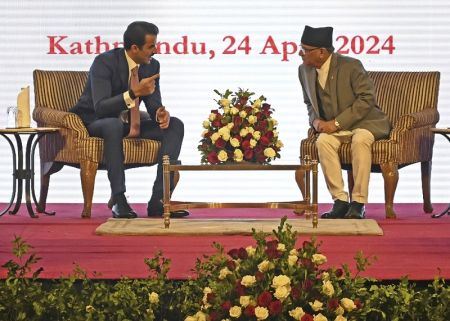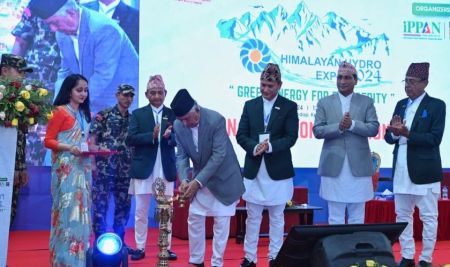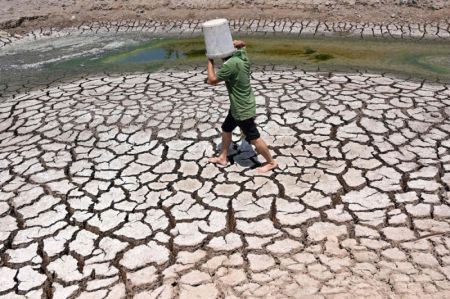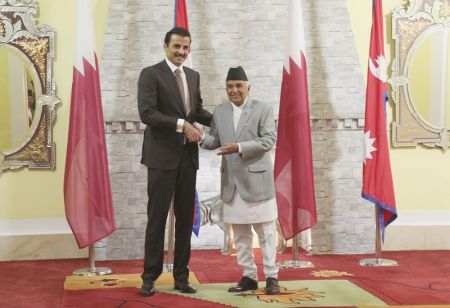.jpg)
--By Gaurav Aryal and Sanjeev Sharma
Plan Nepal has been active in Nepal as a child centered development organisation for three and a half decades as a partner for enhancing lives of Nepali children. Beginning from Kathmandu in 1978, Plan Nepal now has its programmes being implemented in 455 VDCs of 13 districts.
According to Mattias Bryneson, the country director of Plan Nepal, the organisation is currently implementing five country specific programmes in Nepal. These programmes are on education (basic education), health (including maternal, neonatal and children’s health), hygiene and sanitation and economic security, child protection and child centred disaster risk reduction. Though specialised on working with children, Plan’s programme on economic security is focused on increasing women's access to financial services through saving groups and co-operatives as well as creating opportunitiesfor them inlivelihood and economic development activities. Moreover, it has been actively contributing in safe guarding child rights through its programmes against child trafficking and violence against children.
Recently the Plan has introduced a new programme on disaster risk reduction, specifically focusing on children and young people. The organisation’s programmes are designed to support families, communities and governments to promote the rights of children. Bryneson explains, “We develop our country strategy and programmes after analysing the situation of children. We will continue with our five country programmes. We will also conduct a review of strategic planning by next year to look for possible changes that can be included into future programmes,” Bryneson said adding, “As of now, we are not going to make any change in our programmes.
In 2013 the Plan has invested USD 6.8 million in Nepal. 20.05 per cent of it is invested in household economic security, 15.55 per cent in child protection, 13.4 per cent in education, 6.73 per cent in water, sanitation and hygiene, 5.08 per cent in health and 3.01 per cent in disaster risk management. Plan says that it has received USD 7.2 million, as sponsorship for the fiscal year 2014. Last year the amount was USD 7.1 million. Similar spike has been in the amount of grants it received this year. Last year it had receivedUSD 4 million as grants and for 2014 the amount climbed up to USD 4.9 million. There are 35 active grants, three framework agreements and seven corporate grants.
Making Impacts
Bryneson says that Plan’s programmes have made considerable impacts in supporting children, families and communities. “These programmes have created a sense of realisation among the communities to ensure the rights of children. Plan Nepal's programmes such as increasing children’s access to sanitation and education (specifically girls), protecting children from violence and exploitation, rescuing them from bonded labour and trafficking have made positive impacts,” he explains.The organisation’s impact is also visible on economic empowerment of women and marginalised groups.
Similarly, the organization has also been implementingcommunity-led total sanitation programme (CLTS) in its working districts. “We along with local partners were able to declare Makwanpur district as 'open defecation free' (ODF) district in Nepal. We have substantial evidences that prove CLTS programme is cost effective,” he shares.
According to Plan’s report, more than 30,000 children are benefiting from the programme on children’s education. Likewise, 39,000 children are sponsored from six districts under the Child Sponsorship programme.
.jpg)
Nepal Strategy
Nepal Strategic Plan that began on July 2010 is undertaking six country programmes on health, water, sanitation and hygiene, basic education, household economic security, child protection and participation and child centred disaster risk management. This plan will conclude in June 2015. To implement these programmes, the organisation will be working closely with community based organisation, non-government organisation, government and alliances as well as coalition members. These programmes are in tune to the children’s access and right to health, education, economic empowerment, community participation, protection from abuse and exploitation and disaster risk management.
| Plan Nepal in 2013 Health • 4,990 pregnant women informed about HIV testing • 2,462 female community health volunteers (FCHVs) trained in community-based newborn care, including measures to prevent infection • 3,627 staff members of health facilities and community leaders oriented to safe motherhood • 3,007 sets of key maternal and newborn healthcare commodities provided to health facilities • 54,643 tubes of chlorhexidine to prevent the infection of newborns’ navels supplied to health facilities • 341 new pregnant women’s groups (PWGs) formed • 2,213 children with disabilities received treatment, assistive devices, corrective surgery, and/or rehabilitation • 724 children received emergency care and treatment Education • 13 VDCs declare themselves free of out-of-school children • 35,421 children received assistance to continue their education • 1,675 teachers got training in teaching skill and management • 1,130 pre-primary and early childhood education and development (ECED) centres received learning materials Water, Sanitation and Hygiene • 30,316 households built toilets without subsidies • 1,070 families got access to clean drinking water • 22,500 children participated in sanitation awareness activities at school • 1,200 teachers, students, parents and members trained in school about water, sanitation and hygiene. Child-Centred Disaster Risk Reduction • 41 VDCs prepared disaster risk reduction (DRR) plans • 4,100 people, 2,395 of whom were children, participated in basic DRR training • 3 emergency stockpiles each serving 1,000 people were established in three districts Child Protection • 22,253 children’s births were registered and 23 VDCs achieved universal birth registration • 11,511 women participated in behaviour change communication session • 11,077 adolescents attended Better Life Skill Classes • 6,925 people were oriented to child protection • 497 child labourers rescued and reunited within their families • 6 VDCs were established as child-friendly Household Economic Security • 83,290 members of self-reliant groups (SRGs) and cooperatives received financial service • 3,165 families participated in vegetable production training • 427 families started tomato production • 5,685 families engaged in commercial vegetable production • 248 landless farmers received support to cultivate crops Source: Plan Nepal |





















